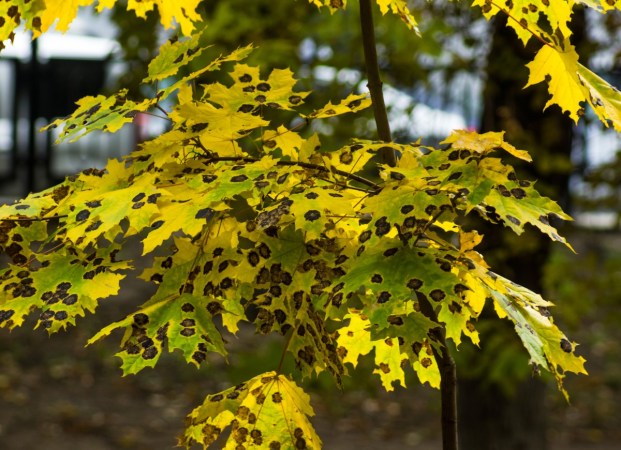We may earn revenue from the products available on this page and participate in affiliate programs. Learn More ›
Trees add great beauty to your landscape and their shade can help keep cooling costs low. But when a tree outgrows its location or is seriously damaged in a storm, it becomes a hazard that should be removed—and chopping it down is only half the battle.
A tree’s underground root system can extend up to 20 feet deep in ideal soil conditions, and spread over an even greater area. These tree roots can continue to grow even after the trunk is history and, if close to your sewer line or foundation, cause serious damage. Eliminate underground issues with either the chemical or natural treatment described here—just remember to use caution and keep both herbicide and rock salt out of reach of pets and kids. Now read on to get to the root of the problem.
Option 1: Chemical Herbicide
The fastest, most effective way to kill roots is with chemical herbicide, as soon as the tree has been cut down. If you can treat the tree immediately, proceed to Step 2; if not, follow Step 1.

TOOLS AND MATERIALS
– Saw
– Watering can (or garden hose)
– Glyphosate herbicide (with 41 percent or higher active ingredient concentration)
– Small bucket
– Garden sprayer (or paintbrush)
1. If the tree was cut down days (or more) ago, make a fresh cut with a saw across what remains of the trunk.
This slice should create a flat surface and expose new flesh. With trees three inches or less in diameter, cut across the entire surface of the trunk. For larger trees, expose new flesh of the outer two to three inches.
2. Saturate the tree’s cambium layer—the outer ring located just under the bark—with 2 to 3 inches of water.
As this outer layer is still alive and growing, the liquid will help carry the herbicide from the live tissue to the tree roots.
3. Mix a 50/50 solution of glyphosate herbicide to water and apply it to the exposed cambium layer.
You can use a garden sprayer, hand-held sprayer, or paintbrush to do so. Be careful in your application to avoid splashing and inadvertently harming plants or grass surrounding the trunk. Tree roots should die off completely in a couple of weeks.
Option 2: Rock Salt
Although it takes longer than chemical herbicide, rock salt can effectively kill tree roots by robbing them of water.
TOOLS AND MATERIALS
– Rock salt
– Water
– Drill (with 1-inch or larger drill bit)
1. Drill several holes 3 to 4 inches deep into the cut surface of the tree trunk.
Before you stow your power tool, bore several additional holes into any larger roots that are exposed near the ground.
2. Fill the holes completely with rock salt, and pour water into them to fill to the top.
Avoid overfilling, as the rock salt solution is harmful to surrounding vegetation and toxic to pets—you won’t want any spillover. Repeat this process several times for a few months, and eventually rock salt will kill the tree roots. (You’ll know the roots are dead when there is no longer any regrowth from the trunk.)
Fear that the roots have invaded a sewer line or your foundation? Maybe you wish to keep the decomposing material from feeding unattractive fungus. In either case, you could also attempt digging the larger tree roots out of the ground. It’s an arduous process, but once you remove them you can reclaim your lawn.
















